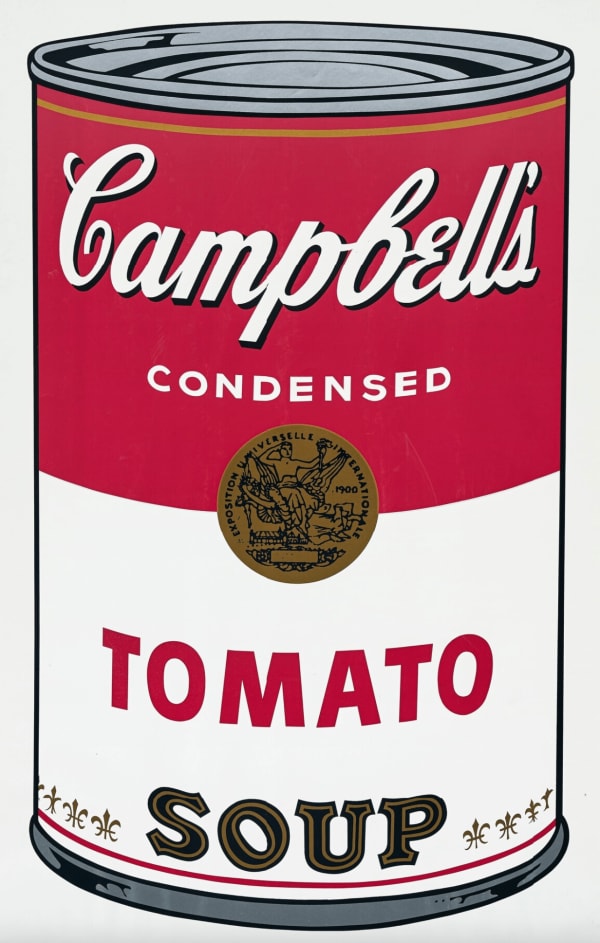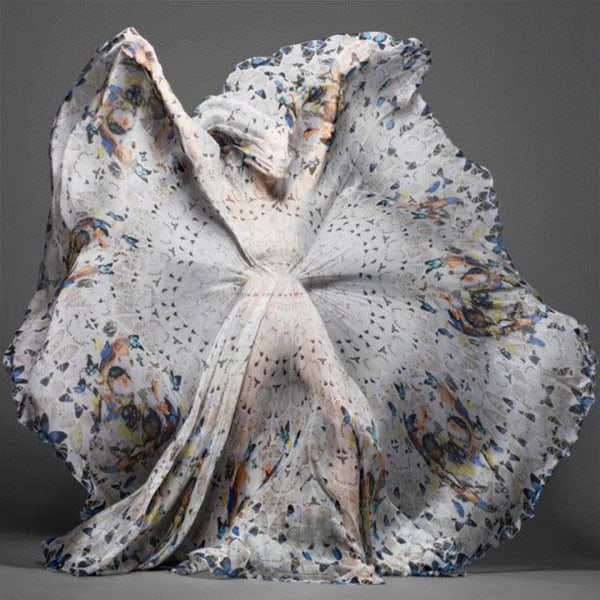Andy Warhol
"The idea is not to live forever; it is to create something that will."
Andy Warhol is undoubtably one of the leading protagonists to the Pop Art movement that came out of 1960s New York. His works examine the relationship between artistic expression, advertising and celebrity culture and combines avant-garde concepts with highly-commercialised techniques. He embraced consumerism at a time when most were rebelling against it, and challenged the traditional concept of the artist itself.
After initially moving to New York to pursue a career as an illustrator, he began painting. Warhol’s first Pop Art paintings used cartoon and advertising imagery, and drew upon the self-conscious brushwork of the Abstract Expressionists. This soon shifted however, when he began appropriating subjects from newspapers, popular culture and consumer products, adopting an inexpressive style.
In 1962, he exhibited 32 canvases of the now-iconic Campbell Soup Can, at Ferus Gallery, Los Angeles. They were among his first works based on consumer goods and would be the first to embrace the idea of serial reproduction. The fascination with mass-production followed with the founding of the ‘Factory’, where he began using screen printing to depict massed ranks of goods, and employed many assistants to carry out the work. Primarily a commercial device, the silkscreen allowed for endless repeated variations of chosen subjects, displaying a flat uniformity that would become his signature style.
Warhol’s works span a multitude of medias, from painting and silkscreen, to photography and film. During 1963 he began experimenting with film, and by 1968 had produced over 60 films and 500 short black and white portrait clips of visitors to his studio. The inexpressive style iconic of his paintings and silkscreens, filtered down into film, presenting extreme boredom as an aesthetic experience with some lasting as long as 25 hours.
Since his death in 1987, Warhol’s stature has been on a constant upward trajectory. In 2022, ‘Shot Sage Blue Marilyn’ sold at Christies for $195 million, becoming the most expensive American artwork sold at auction. Two museums in Slovakia and Pittsburgh have also been establish dedicated to his work.
-
 Absolut Vodka, 1985
Absolut Vodka, 1985 -
 Paramount (F. & S. II.352) (Signed), 1985
Paramount (F. & S. II.352) (Signed), 1985 -
 Queen Elizabeth II (F.S II no. 337) (Purple), 1985
Queen Elizabeth II (F.S II no. 337) (Purple), 1985 -
 Turtle (FS II.360A), 1985
Turtle (FS II.360A), 1985 -
 Vesuvius (F. & S. 365), 1985
Vesuvius (F. & S. 365), 1985 -
 African Elephant (FS II.295), 1983
African Elephant (FS II.295), 1983 -
 Orangutan (FS II.299), 1983
Orangutan (FS II.299), 1983 -
 Mao, 1972
Mao, 1972 -
 Mao (FS II.90), 1972
Mao (FS II.90), 1972 -
 Electric Chair (F. & S. 82), 1971
Electric Chair (F. & S. 82), 1971 -
 Flowers (FS II.69), 1970
Flowers (FS II.69), 1970 -
 Campbell's Soup II: Hot Dog Bean (FS II.59), 1969
Campbell's Soup II: Hot Dog Bean (FS II.59), 1969 -
 Campbell’s Soup Cans II: Cheddar Cheese (FS II.63), 1969
Campbell’s Soup Cans II: Cheddar Cheese (FS II.63), 1969 -
 Oyster Stew (FS II.60), 1969
Oyster Stew (FS II.60), 1969 -
 Andy Warhol Pepper Pot (FS II.51), 1968
Andy Warhol Pepper Pot (FS II.51), 1968 -
 Beef Consommé, from Campbell's Soup Cans I (F&S II.52), 1968
Beef Consommé, from Campbell's Soup Cans I (F&S II.52), 1968 -
 Campbell's Soup I, Tomato (F&S II.46), 1968
Campbell's Soup I, Tomato (F&S II.46), 1968 -
 Campbell's Soup I, Vegetable Made With Beef Stock (F. & S. II.48) (Signed), 1968
Campbell's Soup I, Vegetable Made With Beef Stock (F. & S. II.48) (Signed), 1968 -
 Green Pea Soup, from Campbell's Soup I (F. & S. II.50), 1968
Green Pea Soup, from Campbell's Soup I (F. & S. II.50), 1968 -
 Onion Soup, Campbell’s Soup I (F&S IIB.47), 1968
Onion Soup, Campbell’s Soup I (F&S IIB.47), 1968 -
 Marilyn F&S II.22, 1967
Marilyn F&S II.22, 1967 -
 Marilyn F&S II.24, 1967
Marilyn F&S II.24, 1967 -
 Marilyn F&S II.29, 1967
Marilyn F&S II.29, 1967 -
 Marilyn F&S II.30, 1967
Marilyn F&S II.30, 1967 -
 Northwest Coast Mask
Northwest Coast Mask
-

Celebrating Harland Miller
We explore the literary-loving artist and his influence on contemporary art 4 May 2023British artist Harland Miller’s Penguin Classics paintings have become a classic in themself. Influenced by American artists like Ed Ruscha, Robert Rauschenberg, and Mark Rothko,...Read more -

Frieze 2022
Our Top Picks 18 October 2022What did we find at Frieze 2022, here are our top picks for this year’s art fair. Blue-Chip Work Damien Hirst, Veil of Dreaming, 2017...Read more -

Frieze 2022
The Insider’s Guide To Frieze 11 October 2022As October approaches, the British art world goes into overdrive. Artists, gallerists and collectors descend on the city, attempting to keep up with a hectic...Read more -

Art and Fashion
Three Collaborations that Changed the World 5 October 2022From Bella Hadid’s spray on Coperni dress to Kanye's attention seeking stunts, this year’s fashion season was more sensational than ever. As Paris Fashion Week...Read more





























